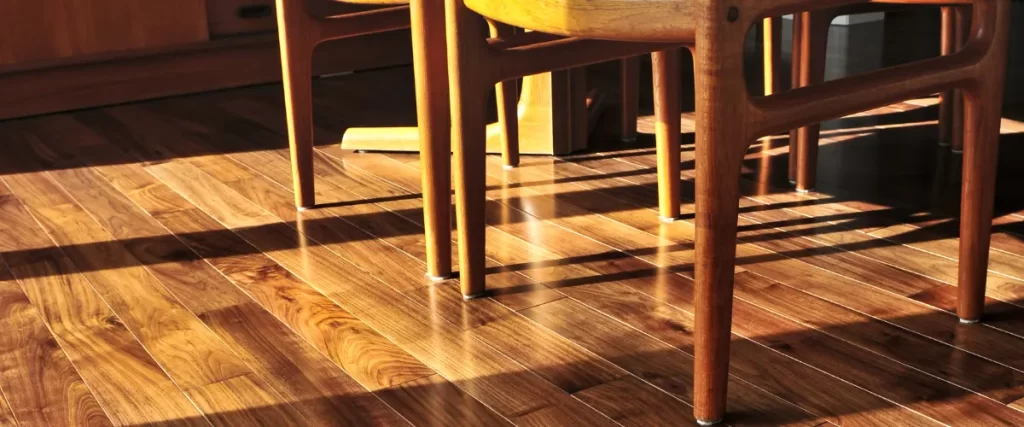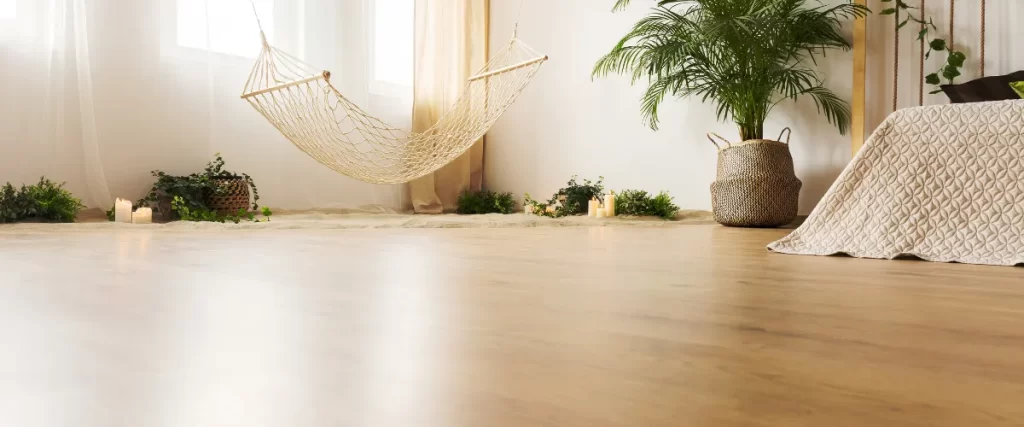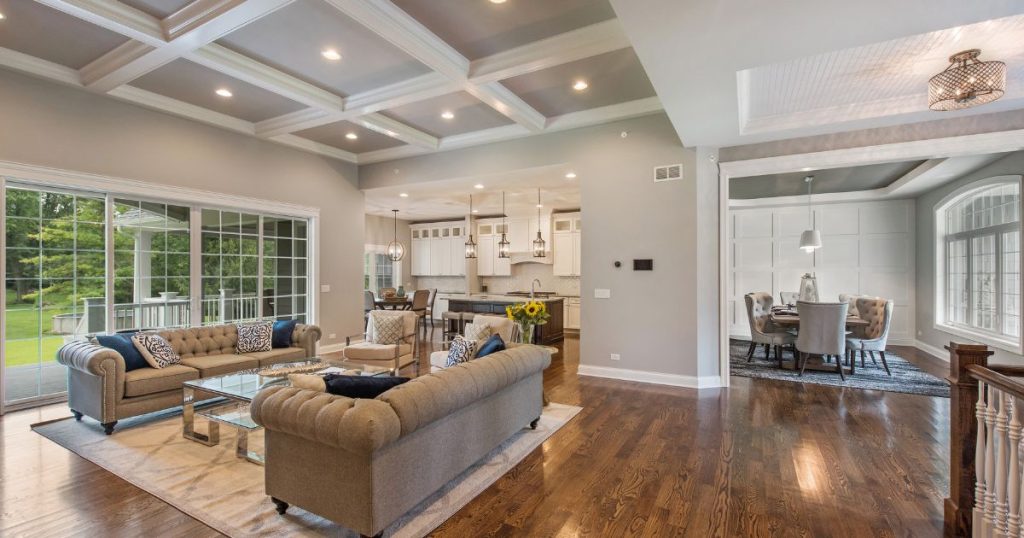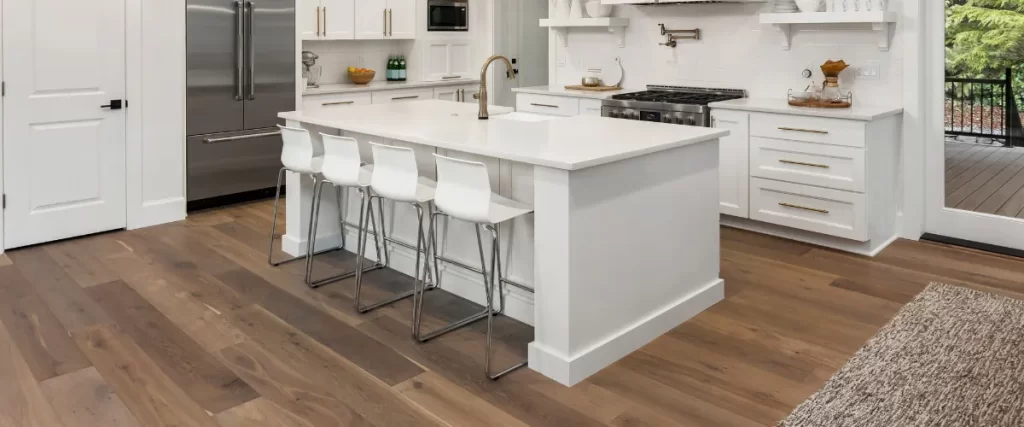Restoring a historic home in Roswell is an opportunity to preserve the unique architectural character and charm that define its history. One of the most significant aspects of such restorations is choosing the right hardwood floors.
Not only do these floors set the tone for the interior aesthetics, but they also impact the home’s longevity and functionality.
In this guide, we’ll delve into the factors to consider when selecting hardwood floors for historic homes, discuss the balance between preserving authenticity and integrating modern durability, and provide practical tips and strategies for successful restoration projects.

Understanding the Significance of Hardwood Floors in Historic Homes
Hardwood floors have long been a hallmark of classic architecture, and many historic homes in Roswell boast original wood flooring that adds character and warmth to the space. However, restoring these floors is not simply about replacing what’s worn out; it’s about honoring the history of the home while ensuring the floors can withstand modern-day challenges.
Key Considerations:
- Authenticity and Historical Accuracy:
Preserving the original look and feel of the home is paramount. Many restoration projects aim to replicate or restore the original hardwood flooring style. - Durability and Modern Performance:
While vintage hardwood floors carry immense historical value, they may not meet today’s performance standards. Advances in wood treatments and finishes can offer improved durability and resistance to wear, moisture, and pests. - Integration with Modern Living:
Balancing historical authenticity with the needs of modern living can be challenging. The selected flooring should complement the home’s historical character while providing comfort and functionality. - Environmental Considerations:
Sustainable practices in restoration are increasingly important. Selecting responsibly sourced hardwood and environmentally friendly finishes can enhance both the aesthetics and the green credentials of your restoration project.
Factors to Consider When Choosing Hardwood Floors
Choosing the right hardwood floors for a historic home requires careful consideration of several factors. Here’s what you need to think about:
1. Style and Period Authenticity
The style of hardwood flooring in historic homes often reflects the era in which the home was built. Consider the following:
- Species:
Original homes might have featured specific wood species such as oak, pine, or walnut. Research the historical records of your home to understand what was originally used. - Grain and Finish:
The natural grain pattern and finish can greatly affect the overall look. A distressed or hand-scraped finish might be more authentic than a highly polished modern look. - Width and Plank Size:
Older homes often feature wider planks, which can convey a sense of spaciousness and authenticity.

2. Durability and Maintenance
Historic homes, while beautiful, may be subject to modern wear and tear. Consider:
- Resistance to Moisture and Pests:
Homes in Roswell might experience fluctuations in humidity. Opt for wood species or treatments that offer enhanced resistance to moisture and insect damage. - Ease of Maintenance:
Restoration projects should consider long-term maintenance. Hardwood floors that are easier to clean and refinish can save time and money over the years. - Subfloor Conditions:
Ensure that the subfloor is properly insulated and in good repair to prevent issues like warping or uneven surfaces.
3. Environmental and Health Considerations
With a growing emphasis on sustainability, it’s important to select flooring that is environmentally responsible:
- Sustainable Sourcing:
Choose hardwood that is certified by organizations like the Forest Stewardship Council (FSC) to ensure responsible harvesting practices. - Low-VOC Finishes:
Opt for finishes that emit low levels of volatile organic compounds (VOCs) to promote healthier indoor air quality.
4. Cost and Long-Term Value
Restoration projects often require balancing quality with budget:
- Upfront vs. Maintenance Costs:
While premium hardwood may have higher initial costs, its longevity and lower maintenance requirements can lead to cost savings over time. - Resale Value:
Authentic, well-restored hardwood floors can significantly enhance the property’s market value. Buyers of historic homes often appreciate quality craftsmanship and preservation efforts.
Restoration vs. Replacement: Making the Right Choice
One of the critical decisions in a historic home restoration project is whether to restore the existing hardwood floors or replace them entirely.
Restoration
Restoration involves repairing, refinishing, and preserving the original hardwood floors. This option is ideal if:
- Historical Integrity is Paramount:
Maintaining the original materials can add immense value to the home and preserve its historical narrative. - The Original Wood is in Fair Condition:
If the floors are salvageable with minor repairs, restoration is both cost-effective and authentic. - Emotional and Aesthetic Value:
Homeowners who cherish the story and craftsmanship of their historic floors often prefer restoration.
Replacement
Replacement might be necessary if the floors are beyond repair. Consider replacement if:
- Severe Damage is Present:
Extensive water damage, warping, or decay may render restoration impractical. - Modern Upgrades are Needed:
In cases where energy efficiency and safety improvements are required, a full replacement might offer a more durable solution. - Matching Original Styles:
Sometimes new materials can be sourced that closely mimic the original style, preserving the look while offering modern performance benefits.
Restoration vs. Replacement Considerations
| Factor | Restoration | Replacement |
| Historical Authenticity | Maintains original materials and craftsmanship | New materials can be chosen to match historical style, but authenticity may be compromised |
| Cost | Generally lower upfront cost if damage is minimal | Higher initial cost, but may offer better long-term durability in severely damaged floors |
| Condition of Existing Floor | Best for floors with minor damage or wear | Necessary when damage is extensive and repair is not feasible |
| Long-Term Value | Preserves historical integrity, enhancing resale value | Modern materials can improve efficiency and safety, potentially increasing market appeal |
Best Practices for Hardwood Floor Restoration in Historic Homes
If you decide to restore your historic hardwood floors, consider these best practices:
- Thorough Cleaning and Repair:
Begin by cleaning the floors thoroughly. Address any loose boards, cracks, or water damage before refinishing. - Sanding and Refinishing:
Sand the floors to remove old finishes and smooth out imperfections. Apply a protective finish that matches the historical aesthetic of the home. - Preserve Original Details:
Whenever possible, retain unique features such as inlaid designs, original molding, or distress patterns that add character. - Regular Maintenance:
After restoration, maintain the floors with regular cleaning and periodic reapplication of sealants to protect against moisture and wear.
Best Practices for Replacement Projects
For replacement projects, here are some tips to ensure that new hardwood floors blend seamlessly with your historic home:
- Match the Original Aesthetics:
Choose wood species, plank width, and finish that closely replicate the original flooring. This can involve custom orders or specialty suppliers. - Quality Subfloor Preparation:
Ensure that the subfloor is in excellent condition. Repair any damage and install proper insulation and moisture barriers before laying new flooring. - Professional Installation:
Work with contractors who specialize in historic home renovations. Their expertise can ensure that the installation respects the home’s character while meeting modern standards. - Incorporate Modern Upgrades:
While preserving the aesthetic is important, don’t hesitate to incorporate modern materials or techniques that enhance durability and energy efficiency.

Frequently Asked Questions
Q: How do I decide between restoring and replacing my historic hardwood floors?
A: Evaluate the extent of the damage, historical value, and long-term cost. Restoration is best for minor wear, while replacement is necessary for extensive damage.
Q: Can I find hardwood that matches the original look of my historic floors?
A: Yes, many suppliers offer reclaimed or custom-sourced hardwood that replicates the look and feel of older floors while providing modern durability.
Q: How can I protect my restored hardwood floors from future damage?
A: Regular maintenance, proper humidity control, and timely repairs are key. Consider using low-VOC finishes to enhance durability and preserve the wood.
Q: What is the average cost difference between restoration and replacement?
A: Restoration is generally less expensive upfront if the damage is minimal, while replacement can be more costly but may offer better long-term performance for severely damaged floors.
Q: Are there any environmental benefits to restoring rather than replacing hardwood floors?
A: Absolutely. Restoring original floors is environmentally friendly because it reduces waste and preserves the original material, aligning with sustainable practices.
Best Hardwood Floor Manufacturers
When selecting high-quality hardwood floors, reputable manufacturers can ensure durability, style, and sustainability through excellent craftsmanship and material sourcing.
- Bruce Hardwood Flooring: Known for its innovative designs and affordable options, offering a wide range of finishes and wood types.
- Armstrong Flooring: A pioneer in flooring solutions, providing eco-friendly options with long-lasting durability and elegant aesthetics.
- Mullican Hardwood Flooring: Renowned for crafting premium, American-made hardwood floors with a focus on sustainability and exceptional quality.
- Kahrs International: Offers versatile and eco-conscious flooring solutions, blending modern manufacturing practices with Scandinavian craftsmanship.
- Lumber Liquidators: Delivers affordable and quality hardwood flooring selections, catering to diverse needs and design preferences.

Why Choose Our Team
With years of expertise in hardwood flooring, our professional team ensures top-tier results. Work with the best to save money long-term. Contact us at to kickstart your hardwood floor refinishing today!
